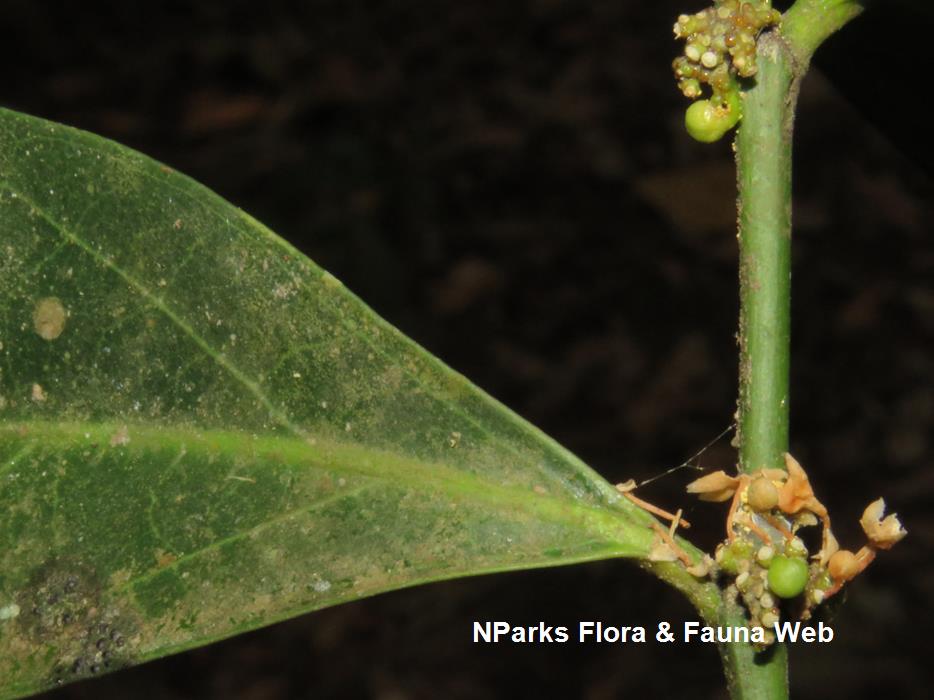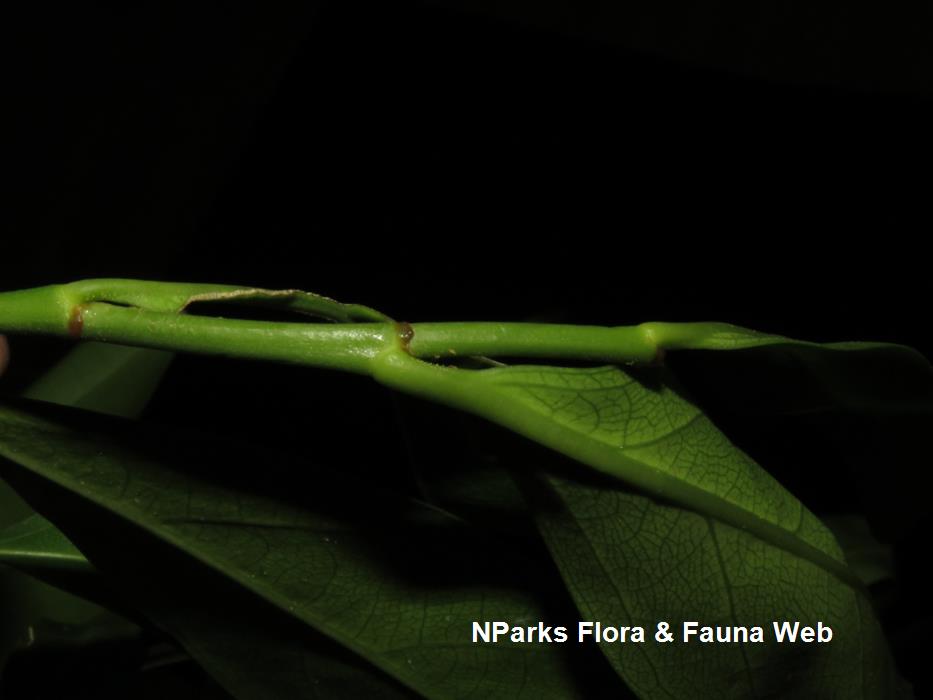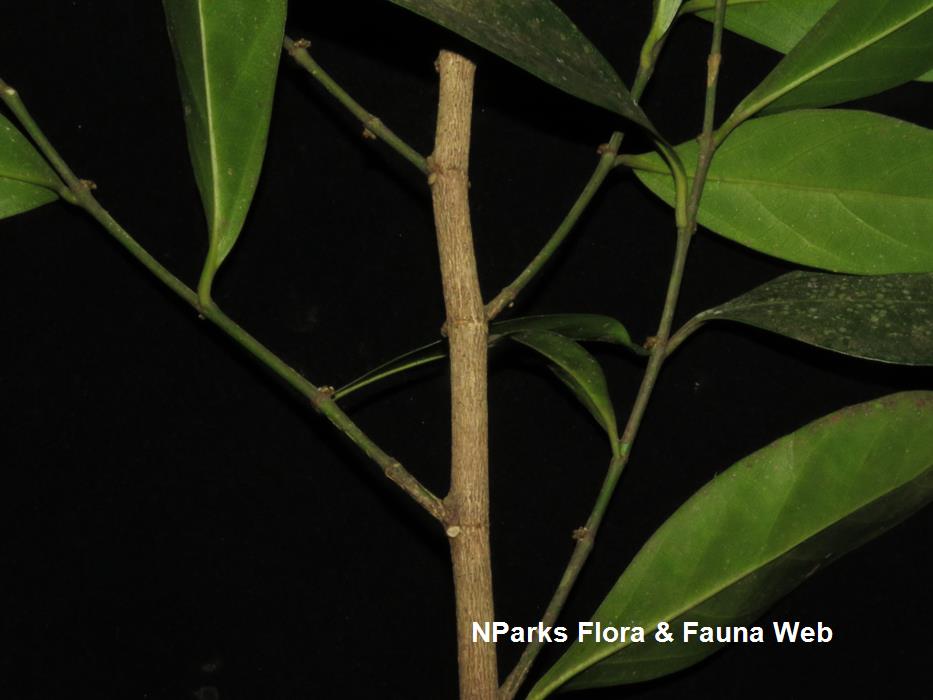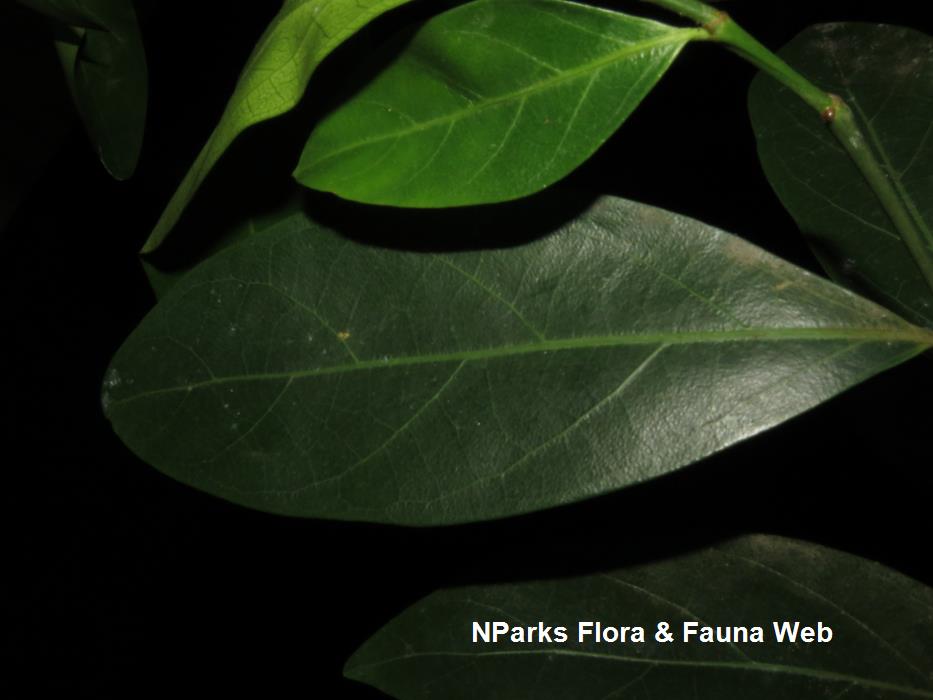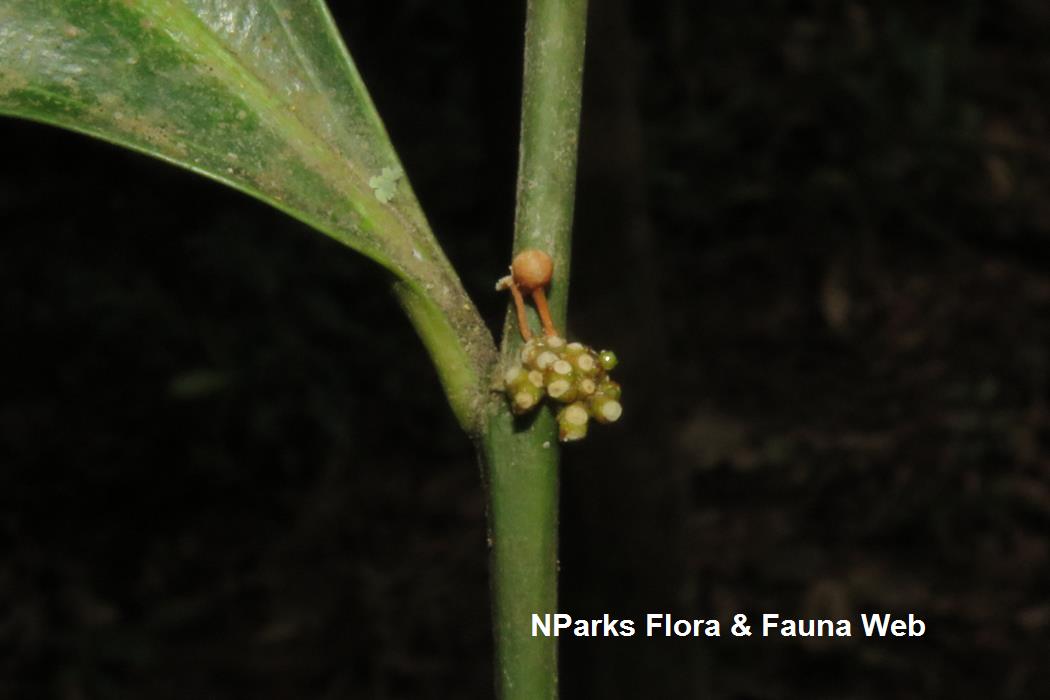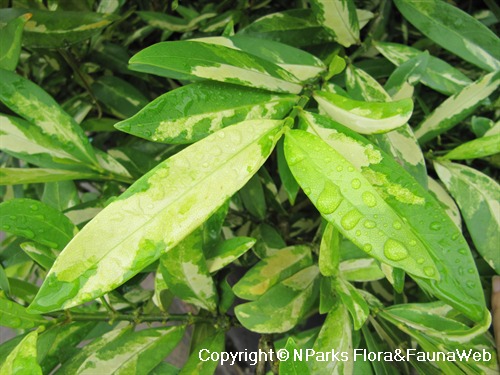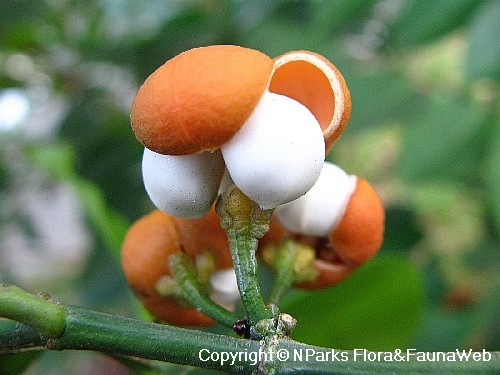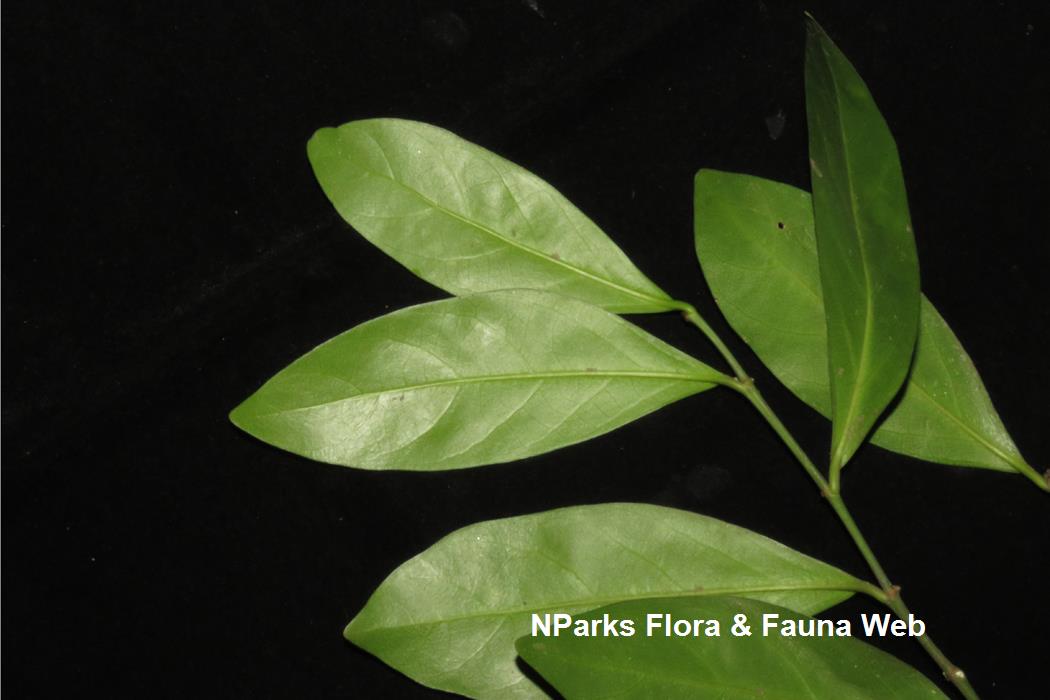
Back
Suregada glomerulata (Blume) Baill.
| Family Name: | Euphorbiaceae |
| Synonyms: | Gelonium glomerulatum (Blume) Hassk., Suregada multiflora auct. non (A.Juss.) Baill. <2> |
| Common Name: | Limau-Limau, Penawar Puteh |
Suregada glomulerata is a tree or shrub, native to Singapore. Growing to 21 m tall, Suregada glomulerata has elliptic, wedged to spoon shaped leaves, small, dioecious flowers and round, orange-red fruit that splits into 3 upon maturity. The male flowers are greenish-yellow, closely clustered, each with numerous stamens while the female flowers are small, white consist of 5 - 6 sepals.
Name
Classifications and Characteristics
| Plant Division | Angiosperms (Flowering Seed Plants) (Dicotyledon) |
|---|---|
| Plant Growth Form | Tree (Small (6m-15m), Medium (16m-30m)) |
| Lifespan (in Singapore) | Perennial |
| Mode of Nutrition | Autotrophic |
| Maximum Height | 21 m |
Biogeography
| Native Distribution | Malesia, Philippines, Indonesia, Timor and New Guinea, Southern China and Northern Territory |
|---|---|
| Native Habitat | Terrestrial (Primary Rainforest, Secondary Rainforest) |
| Preferred Climate Zone | Tropical |
| Local Conservation Status | Native to Singapore (Critically Endangered (CR)) |
Description and Ethnobotany
| Growth Form | It is a bushy tree that can grow up to 21 m tall, sometimes seen growing as a shrub. <4> |
|---|---|
| Foliage | Leaves are fleshy, leathery, elliptic or narrowly wedged to spoon shaped with its base extending down a short petiole measuring up to 18 cm long and 6 cm wide. <1> <4> |
| Flowers | Flowers are dioecious where the female and male flowers are borne separately on the same tree. The male flowers are closely clustered, each with numerous stamens, greenish-yellow coloured on short stalks. The female flowers are small, white, narrow, with 5 - 6 sepals. <1> <4> |
| Fruit | Fruit is a round, orange-red, 3-lobed capsule, that splits upon maturity to reveal its black seeds. <1> <4> |
| Habitat | Occurs in lowland, lower montane rainforest between 130 - 1160 m in altitude, often near running freshwater. <1> |
| Taxonomy | Plants in forests or natural areas of Singapore thought to be Suregada multiflora are now known to be Suregada glomerulata. However, cultivated plants of Suregada multiflora in Singapore are indeed Suregada multiflora. <3> |
| Cultivation | It can be propagated by stem cuttings or seed. |
Plant Care and Propagation
| Light Preference | Full Sun |
|---|---|
| Water Preference | Moderate Water |
| Plant Growth Rate | Moderate |
| Rootzone Tolerance | Fertile Loamy Soils, Moist Soils, Well-Drained Soils |
Foliar
| Mature Foliage Colour(s) | Green |
|---|---|
| Foliar Type | Simple / Unifoliate |
| Foliar Arrangement Along Stem | Alternate |
| Foliar Attachment to Stem | Petiolate |
| Foliar Shape(s) | Non-Palm Foliage (Elliptical, Obovate) |
| Foliar Venation | Reticulate |
| Foliar Margin | Entire |
| Foliar Apex - Tip | Obtuse, Rounded |
Non - Foliar and Storage
| Stem Type & Modification | Woody |
|---|---|
| Root Type | Underground (Fibrous Root) |
Floral (Angiosperm)
| Flower & Plant Sexuality | Unisexual Flowers , Dioecious |
| Flower Colour(s) | Green - Light Green, White |
|---|
| Flower Grouping | Cluster / Inflorescence |
| Flower Location | Axillary |
| Flower Symmetry | Radial |
| Flowering Habit | Polycarpic |
Fruit, Seed and Spore
| Mature Fruit Colour(s) | Orange |
|---|---|
| Fruit Classification | Simple Fruit |
| Fruit Type | Dehiscent Dry Fruit , Capsule |
| Mature Seed Colour(s) | Black |
References
| References | <1> Fell, D.G. (2007). The distribution, habitat and conservation status of Suregada glomerulata (Blume) Baill. (Euphorbiaceae) from north-eastern Cape York Peninsula, Queensland, Austrobaileya 7(3): 573-575. <2> Keng, H. (1980). Annotated list of seed plants of Singapore (VI). Gard. Bull. Sing. 33: 329–367. <3> Lindsay, S. et al. (2022). Flora of Singapore: Checklist and bibliography. Gardens’ Bulletin Singapore 74(Suppl. 1): 3–860. <4> Ridley, H.N. (1967). Gelonium. In: Ridley, H.N. (ed.) Euphorbiaceae. The Flora of the Malay Peninsula, vol. 3, pp. 311. London: L. Reeve and Co. |
|---|
Image Repository
Others
| Master ID | 34298 |
|---|---|
| Species ID | 8711 |
| Flora Disclaimer | The information in this website has been compiled from reliable sources, such as reference works on medicinal plants. It is not a substitute for medical advice or treatment and NParks does not purport to provide any medical advice. Readers should always consult his/her physician before using or consuming a plant for medicinal purposes. |

